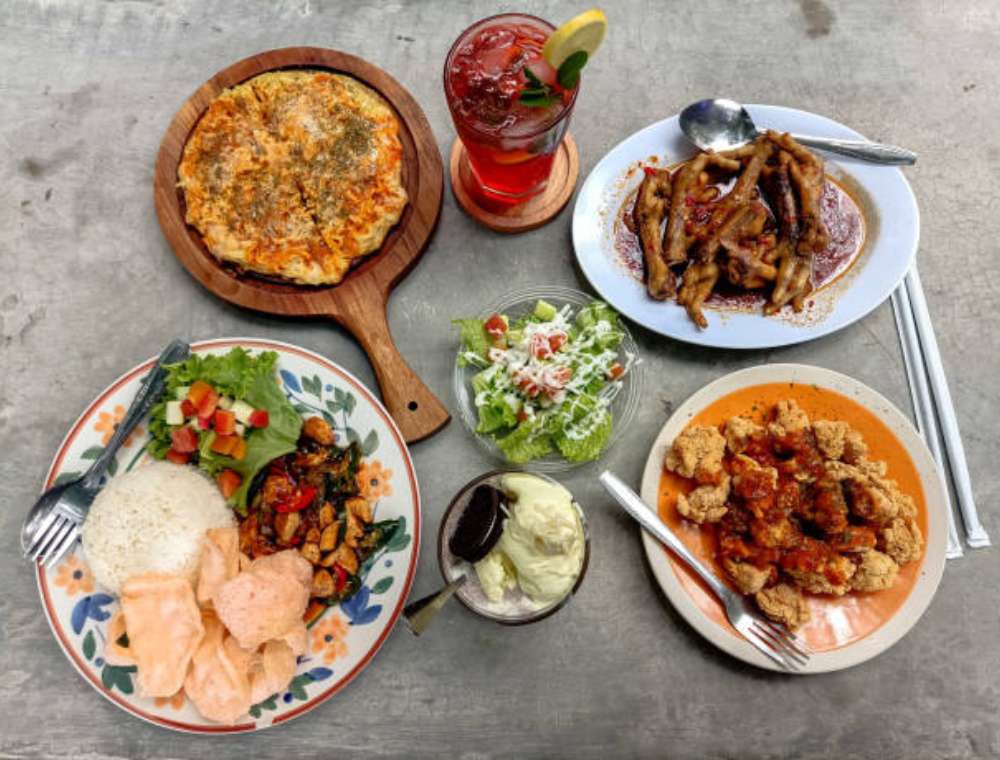Embark on a mouthwatering journey through the vibrant streets of Hanoi, where the air is fragrant with the tantalizing aromas of freshly cook delicacies and the buzz of daily life adds a lively soundtrack to your culinary adventure. In “Street Food Safari in Hanoi: Vietnamese Flavors and Fresh Ingredients,” we dive deep into the heart of Vietnamese cuisine, exploring the rich tapestry of flavors and ingredients that make Hanoi a true paradise for food lovers. From sizzling bánh xèo pancakes to the complex broth of phở, each dish offers a unique insight into the cultural mosaic of this enchanting city.
Join us as we weave our way through narrow alleyways and bustling markets, discovering hidden gems and the stories behind Hanoi’s most beloved street eats. Whether you’re a seasoned foodie or a curious traveler, prepare to be delighted by the simple yet profound joys of Hanoi’s street food scene.
1. Pho Bo (Vietnamese Beef Noodle Soup)
Begin by introducing Pho Bo as a quintessential Vietnamese dish known worldwide for its comforting and aromatic qualities. Detail the main ingredients, which include rice noodles, beef (which can vary from sirloin to brisket), and a flavorful broth that simmers for hours with spices such as star anise and cinnamon. Highlight the customary garnishes like green onions, basil, lime, and bean sprouts. Recommend some well-known street stalls or eateries in Hanoi’s Old Quarter where visitors can enjoy an authentic bowl of Pho Bo, emphasizing the ambiance and local eating practices such as the addition of fresh herbs and sauces.
2. Banh Mi (Vietnamese Sandwich)
Describe Banh Mi as a fusion of French and Vietnamese culinary traditions, characterized by its crispy French baguette filled with a variety of ingredients, including seasoned pork, pâté, pickled vegetables, coriander, and spicy chili sauce. Explain how this street food reflects Vietnam’s colonial history and has evolved into a staple found throughout the city. Suggest top-rated spots in Hanoi where tourists can sample different variations of Banh Mi, perhaps pointing out a vendor who is famous for a unique ingredient or homemade sauce that sets their sandwiches apart from others.
3. Bun Cha (Grilled Pork with Vermicelli)
Introduce Bun Cha as a beloved Hanoian lunchtime dish that showcases the perfect balance of savory and sweet flavors. Detail its components: grilled fatty pork (either patties or slices) served over a plate of white rice vermicelli noodles, with a side of herbs and a dipping sauce based on fish sauce mixed with sugar and lime. Note how this dish is typically accompanied by pickled vegetables and fresh herbs to enhance its flavor profile. Recommend famous Bun Cha eateries in Hanoi, such as the one visited by President Obama, and describe the communal and interactive dining experience typical of Bun Cha meals, where diners can mix their own bowl to their taste.
4. Nem Ran (Vietnamese Spring Rolls)
Explain Nem Ran, known internationally as Vietnamese spring rolls, and differentiate between the fresh and fried versions. Focus on the fried version, which is commonly enjoy in the north and features a crispy exterior filled with ground meat (pork or chicken), mushrooms, and diced vegetables. Discuss how they are traditionally serve with a dipping sauce made from fish sauce or a hoisin base sauce. Highlight where to find the best Nem Ran in Hanoi, perhaps pointing out a popular market or street food vendor known for their exceptionally crispy and flavorful rolls. Mention how these spring rolls are not just a delicious treat but also a festive food often enjoy during Vietnamese celebrations and family gatherings.
5. Bun Bo Nam Bo (Beef Noodle Salad)
Detail Bun Bo Nam Bo as a less internationally recognized but equally delicious dish compared to Pho. Describe this southern Vietnamese specialty that has found a fervent following in Hanoi. It consists of tender beef slices stir-fried with garlic and shallots, served over cold rice noodles and garnished with peanuts, crispy shallots, fresh herbs, and bean sprouts, all tossed with a slightly sweet and tangy sauce. Explain how this dish is a perfect blend of textures and flavors, offering a refreshing and filling meal. Recommend specific eateries in Hanoi that specialize in Bun Bo Nam Bo, highlighting their use of fresh ingredients and homemade sauces that elevate the dish.
6. Cha Ca (Turmeric Fish with Dill)
Introduce Cha Ca as one of Hanoi’s iconic dishes with a rich history dating back over a century. This unique dish features chunks of white fish (commonly snakehead or catfish) marinated in turmeric, then grilled and served sizzling in a pan with copious amounts of dill and spring onions. The dish is typically eaten with rice noodles, a generous sprinkle of peanuts, and a side of nuoc cham (a Vietnamese dipping sauce). Mention the historical Cha Ca La Vong restaurant, where this dish originated, and suggest visiting to experience the authentic atmosphere. Describe the interactive dining experience where diners can cook the fish at their table to their liking, enhancing the communal and vibrant dining culture of Vietnam.
7. Xoi (Sticky Rice)
Introduce Xoi as a versatile and ubiquitous Vietnamese dish that plays a central role in both daily cuisine and special celebrations. Describe the basic preparation of sticky rice, which is often steam and can be sweet or savory. Highlight the various toppings and mix-ins that can be added to Xoi, such as mung beans, coconut, corn, or a savory mixture of meat like chicken, pork, or Chinese sausage. Discuss the popularity of Xoi as a breakfast dish or a snack, and its presence in street food markets where it’s often served wrapped in banana leaves for easy on-the-go eating.
Recommend some of the best spots in Hanoi to try different varieties of Xoi, emphasizing those that are particularly renowned for their unique combinations or particularly high-quality ingredients.
8. Banh Xeo (Vietnamese Savory Pancake)
Describe Banh Xeo as a crispy, savory pancake made from rice flour, water, and turmeric powder, which gives it a characteristic yellow color. Explain how it is typically full of with ingredients such as pork, shrimp, dice green onion, bean sprouts, and sometimes mung beans. Outline the typical way to eat Banh Xeo, which involves breaking off pieces of the crispy pancake and wrapping them in lettuce leaves or rice paper with herbs like mint and basil, then dipping it into a flavorful fish sauce.
Point out some of the popular eateries or street vendors in Hanoi where visitors can enjoy freshly made Banh Xeo, and mention any local variations or notable methods of preparation that set apart the Hanoi style of this dish from others found throughout Vietnam.
9. Goi Cuon (Fresh Spring Rolls)
Goi Cuon, often referred to as fresh spring rolls, encapsulates the freshness of Vietnamese cuisine. Unlike their fried counterparts, these rolls are wrapped in translucent rice paper and typically filled with shrimp, lean pork, fresh vegetables, vermicelli noodles, and herbs. Describe how each ingredient contributes not only texture but also layers of flavor, with a balance of sweetness from the meat, freshness from the herbs, and crunch from the vegetables. Highlight how Goi Cuon is serve with either a hoisin-peanut sauce or a light fish sauce, both enhancing the natural flavors of the rolls. Recommend top places in Hanoi where visitors can enjoy these rolls, emphasizing their popularity as a light and healthy meal option, especially during the warmer months.
10. Ca Phe Trung (Egg Coffee)
Introduce Ca Phe Trung as a distinctive Hanoi specialty that surprises many visitors with its unique combination of coffee and egg. Explain that this beverage consists of Vietnamese coffee topped with a creamy and frothy layer made from egg yolks, sugar, and condensed milk, often likened to a tiramisu in terms of taste and texture. Provide a brief history of how the beverage originated during a milk shortage, leading to the innovative use of egg yolks as a substitute. Suggest cafes in Hanoi, particularly those that are historic or have a reputation for perfecting their egg coffee technique, and encourage visitors to experience this rich, dessert-like coffee in both hot and iced versions, making it a year-round treat.
11. Che (Vietnamese Sweet Dessert Soup)
Che, a delightful Vietnamese sweet dessert soup, offers a fascinating exploration of flavors and textures. Describe Che as a versatile dish that can be served hot or cold, depending on the ingredients used. Explain that it typically consists of a base made from coconut milk, beans, grains, fruits, and sometimes jelly or tapioca pearls, resulting in a harmonious blend of sweet and savory elements.
Highlight the diversity of Che, with variations ranging from Che Ba Ba with taro and sweet potatoes to Che Troi Nuoc with glutinous rice balls in ginger syrup. Recommend popular Che vendors or dessert shops in Hanoi where visitors can indulge in this traditional Vietnamese treat, emphasizing the vibrant colors and aromatic flavors that make Che a beloved part of Vietnamese cuisine.
12. Bia Hoi (Fresh Beer)
Bia Hoi, often referred to as fresh beer, offers a unique and affordable drinking experience in Hanoi. Describe Bia Hoi as a light and refreshing draft beer brewed daily and delivered directly to local pubs and street-side establishments. Explain that it’s known for its low alcohol content and crisp taste, making it the perfect beverage for hot and humid days. Discuss the social aspect of enjoying Bia Hoi, with locals and visitors alike gathering at Bia Hoi corners to chat, relax, and soak in the lively atmosphere.
Recommend specific Bia Hoi spots in Hanoi known for their authenticity and bustling ambiance, highlighting the opportunity to mingle with locals and savor this quintessential Vietnamese beverage while watching the vibrant street life pass by.
Read more: Luxury Safari Experiences in Africa
Conclusion
As our Street Food Safari in Hanoi draws to a close, we reflect on the unforgettable journey we’ve shared, where every bite was a revelation and every encounter a celebration of Vietnamese culinary mastery. From the humblest roadside stall to the bustling night markets, Hanoi’s streets have whispered stories of tradition, innovation, and the enduring spirit of a nation united by its love for food.
We’ve sampled the delicate balance of sweet, sour, salty, and spicy in every dish, marveled at the ingenuity of street vendors crafting culinary treasures with nothing but a wok and a smile, and forged connections with fellow travelers and locals alike over shared meals and shared stories.
As we bid farewell to the lively alleys and bustling squares of Hanoi, we carry with us not just the flavors and fragrances of its street food, but also the warmth of its people and the vibrant tapestry of its culture. May the memories of our Street Food Safari serve as a tantalizing reminder of the beauty and diversity that awaits those who dare to explore the world, one dish at a time. Until we meet again, xin chào và tạm biệt – hello and goodbye from the streets of Hanoi.

